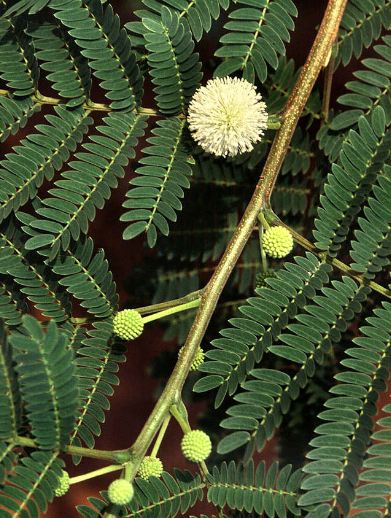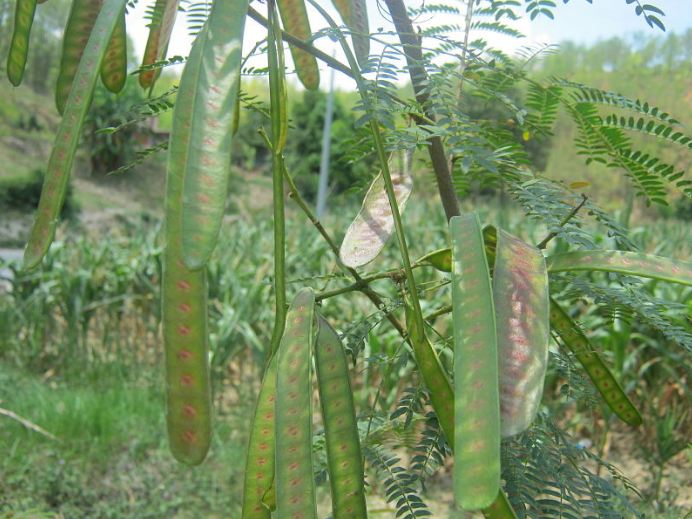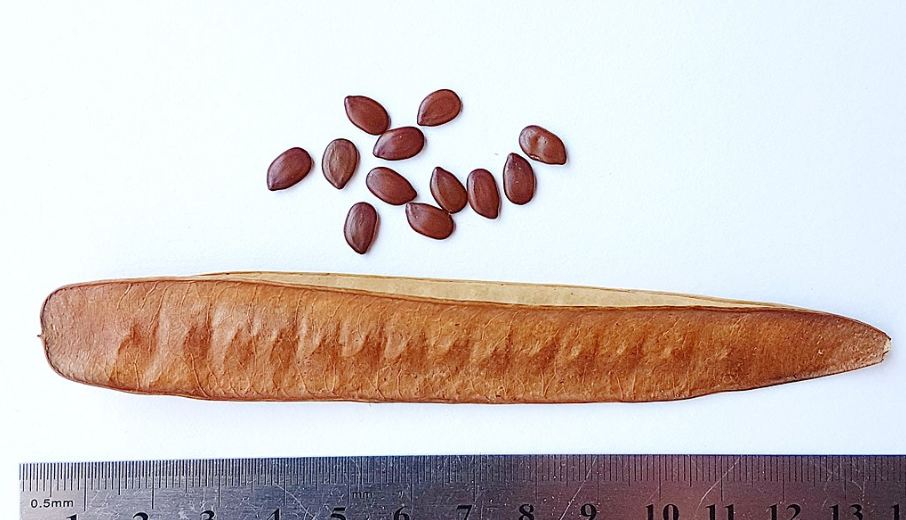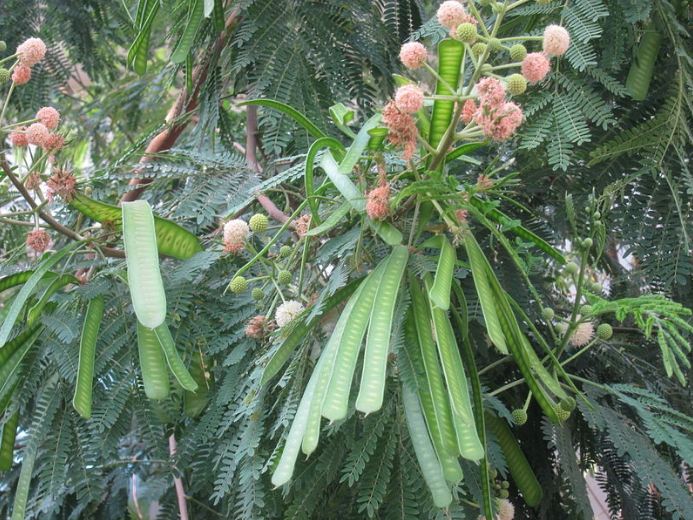LeucaenaLeucocephala, also known as the coffee bush, is a small mimosoid tree native to Northern Central America and Southern Mexico. This small tree is very fast growing and is naturalized along the tropics. Other common names of this plant are; ipil-ipil, white leadtree, river tamarind, jumbay and white popinac.
Physical Description
LeucaenaLeucocephala is a small shrubby, evergreen plant. It is highly branched and can grow to a height of 5 – 20 meters. It has a fairly round crown, and its bole is usually short with a diameter of around 10 to 50cm. The roots of Leucaena are deeply embedded in the soil. It often has a combination of immature and mature pods along with flowers that are present on the tree all at once.
The leaves of LeucaenaLeucocephala are bipinnate, and it bears a number of leaflets that are 8 -16 mm long. The pods of this plant are made of a cream-colored globular shaped cream called inflorescence; these pods are brown and flat in structure with a length of 13 to 18mm. These brown pods contain the seeds of Leucaena, and each pod bears around 15 to 30 seeds.
Distribution
LeucaenaLeucocephala is a plant native to Guatemala and Mexico, which was introduced to South-East Asia and the Philippines in the 16th century, from where it spread across the Asian Pacific region. In the late 19th century, the plant reached Australia.
LeucaenaLeucocephala grows very well in the regions where the annual rainfall rate ranges from 650 to 3000mm. The plant needs a day temperature that varies between 25°to 30°C. Soil that is neutral or mildly acidic and well-drained worksjust fine for this plant. The plant can also tolerate dry climates and can bear drought periods for about 6 to 7 months.
Hazards
Most of the forms of LeucaenaLeucocephala consist of an unusual amino acid called “mimosine.” This amino acid, if used in large quantities, can be very harmful. Low-mimosine cultivars of this plant are also present.
Uses
LeucaenaLeucocephala has several uses, which include edible, medicinal, agroforestry, and some others.
1. Edible Uses
The young leaves, flower buds, and pods of LeucaenaLeucocephala are used in soups and stews. These parts of this plant are also eaten raw sometimes. Since the era of the Mayans, almost all the parts of this plant have been consumed by humans as food.
In countries like Indonesia, Central America, and Thailand, the young leaves of Leucaena are cooked and eaten in soups. In the Philippines, the seeds of this plant are roasted and used as a substitute for coffee, and the young pods are cooked as vegetables. In Indonesia, the dried seeds of Leucaena are popped just like popcorn.
The seeds of Leucaena are considered as non-conventional sources of protein along with other leguminous seeds.
2. Medicinal Uses
According to a study, LeucaenaLeucocephala is one of the medicinal plants used for treating stomach aches, like contraception and abortifacient.
In Latin America, the plant is used as an ecbolic, emmenagogue, or depilatory. However, it did not affect conception when experimented on cattle.
3. Agroforestry Uses
LeucaenaLeucocephala is an aggressive colonizer specifically for the ruderal sites and disturbed grounds. The plant can be very helpful for the restoration of woodland covers by being an excellent pioneer species. Leucaena plants are also used for re-reforestation purposes.
The plant has an extensive root system, and it grows very fast, due to which it is used in land reclamation and to prevent the land from soil erosion. It is also used for providing shade to coffee plants. The excessive and aggressive taproot system of Leucaena helps in breaking up the compacted soil layers and improve the moisture penetration to the soil.
4. Other Uses
There are some other uses of the LeucaenaLeucocephala, which include:
- Extraction of red, black, and brown dyes from the leaves, pods, and bark of the plant.
- Dried seeds of Leucaena are often used for ornamentation.
- The wood of Leucaena is widely used for carpentry because of its strong nature.
- For fiber, the wood of Leucaena is pulped; this pulp is used for the production of paper.
- Used as firewood.
- Used for the production of charcoal.
- The pulp of Leucaena is also used for the production of rayon.
Cultivation Details
LeucaenaLeucocephala can tolerate different soils, such as limestone, soil from volcanic origin, dry soil, soil with moderate levels of salt, and wet soil. These plants tend to respond well to coppicing and soon produce dense regrowth. Leucaena has a symbiotic relationship with some bacteria; these soil bacteria form nodules on the roots of the plant and fix the atmospheric nitrogen. This fixed nitrogen is used by the Leucaena plant itself and by the other plants growing near it.
The unripe pods of LeucaenaLeucocephala are harvested by climbing trees and lopping the groups of pods, often crudely with small knives or machetes. The annual pollarding results in only a limited amount of damage to the trees, resulting in resprout and fruiting annually.
Biotic Factors
Relatively, this plant is resilient to diseases and pests, but the extensive culture of the plantation can result in inviting the breakdown of this resistance. Seed weevils, termites and twig borers, and damping can hinder the plant. Herbivorous mammals can also harm the seedlings as they tend to be fond of them.
Conclusion
LeucaenaLeucocephala is a useful plant in many aspects. Along with being just a shrubby tree, it has great benefits for other plants and the soil, as we discussed above. Along with providing seeds andfruit, this plant is also a source of shade and nitrogen for its surrounding plants. Not just this, Leucaena is also used for medicinal purposes. So if you are planning to get a LeucaenaLeucocephala for your garden, farm, etc. go for it





